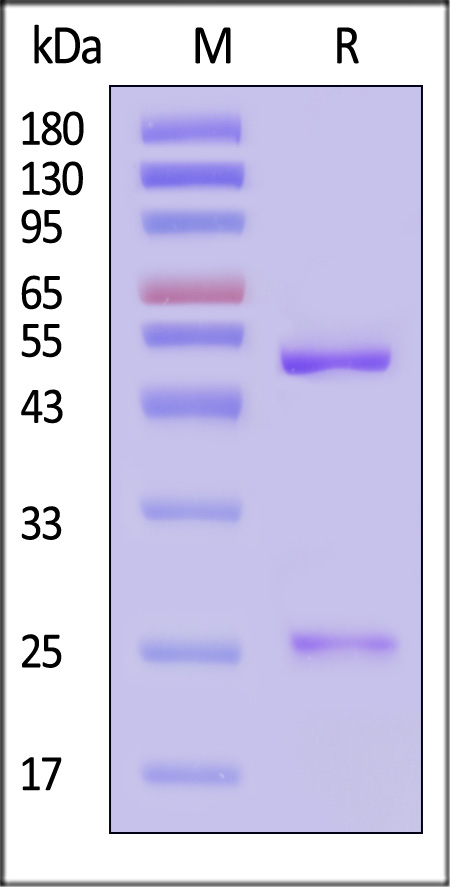抗体来源(Source)
Monoclonal Anti-Human Phospho-Tau (Thr181) Antibody, Mouse IgG2a (8D8C10) is a Mouse monoclonal antibody produced from a hybridoma created by fusing SP2/0 myeloma and Mouse B-lymphocytes.
克隆号(Clone)
8D8C10
种属(Species)
Mouse
亚型(Isotype)
Mouse IgG2a | Mouse Kappa
偶联(Conjugate)
Unconjugated
抗体类型(Antibody Type)
Hybridoma Monoclonal
种属反应性(Reactivity)
Human
免疫原(Immunogen)
Recombinant phosphorylated Tau181(pTau181) polypeptide.
特异性(Specificity)
Specifically recognizes Human p-Tau181 Protein.
应用(Application)
| Application | Recommended Usage |
| IF | 1:50-1:500 |
纯度(Purity)
>95% as determined by SDS-PAGE.
纯化(Purification)
Protein A purified / Protein G purified
制剂(Formulation)
Lyophilized from 0.22 μm filtered solution in PBS, pH7.4 with trehalose as protectant.
Contact us for customized product form or formulation.
重构方法(Reconstitution)
Please see Certificate of Analysis for specific instructions.
For best performance, we strongly recommend you to follow the reconstitution protocol provided in the CoA.
存储(Storage)
For long term storage, the product should be stored at lyophilized state at -20°C or lower.
Please avoid repeated freeze-thaw cycles.
This product is stable after storage at:
- -20°C to -70°C for 12 months in lyophilized state;
- -70°C for 3 months under sterile conditions after reconstitution.
电泳(SDS-PAGE)

Monoclonal Anti-Human Phospho-Tau (Thr181) Antibody, Mouse IgG2a (8D8C10) on SDS-PAGE under reducing (R) condition. The gel was stained with Coomassie Blue. The purity of the protein is greater than 95% (With Star Ribbon Pre-stained Protein Marker).
免疫荧光(Immunofluorescence)

2D cell staining: Immunofluorescent staining (10X) of phosphorylated tau in treated SH-SY5Y neuroblastoma cells with purified PT1-Y2073 at 1:200 dilution. DAPI (blue) was used as nuclear counterstain.
Protocol
背景(Background)
Tau, the microtubule‐associated protein, forms insoluble filaments that accumulate as neurofibrillary tangles in Alzheimer's disease (AD) and related tauopathies. Under physiological conditions, tau regulates the assembly and maintenance of the structural stability of microtubules. In the diseased brain, however, tau becomes abnormally hyperphosphorylated, which ultimately causes the microtubules to disassemble, and the free tau molecules aggregate into paired helical filaments.























































 膜杰作
膜杰作 Star Staining
Star Staining











